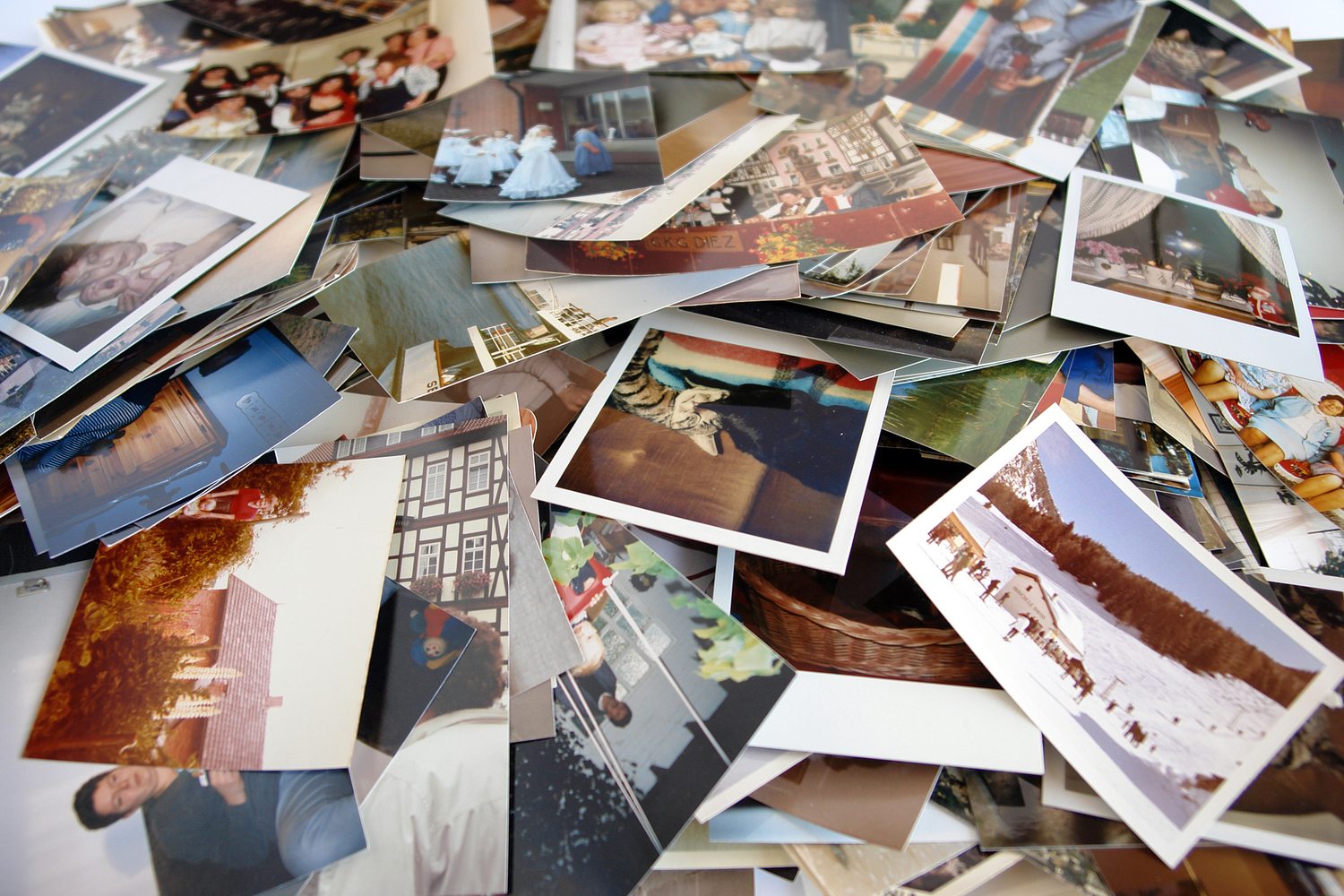

Pictures and videos are likely to be some of your most precious digital possessions. They represent snapshots of loved ones, special places, memorable events, incredible trips, and even some moments that will have you laughing for years to come. We take a lot of these with our smartphone cameras, so we might as well make sure they’re safe and looked after.
Moving your photos and other files to cloud storage is a great idea if you want to protect them, and there are numerous apps and services that will take good care of your images. Even better, if you decide to, say, transfer your Amazon photos to iCloud, it is possible to switch platforms without too much of a hassle.
Get comfortable and open your laptop—phone apps are simply less capable than full-blown computers when it comes to downloading and uploading entire archives of images and videos. And no matter how much you trust your cloud storage provider, always back up your photos and other data somewhere else.
Google Photos
If you have an Android phone, your images likely reside in Google Photos. You can keep them ‘there if you like, but you can always switch.
Importing images to Google’s cloud storage
Google Photos lives on the web, and you’ve got a couple of options for getting pics and vids up into the cloud. First, load up Google Photos in your browser, then simply drag files and folders across from File Explorer (Windows) or Finder (macOS). If you’d rather do this another way, click Upload, then Computer at the top of the Google Photos web interface, and upload your files.
[Related: Google Photos is better at image editing than you think]
For an even easier way to move your photos to the cloud, download the Google Drive desktop app (free for Windows and macOS). It lets you specify certain folders on your computer that will automatically sync with Google Photos, which means that everything you add to those folders will have a copy in the cloud you can access from anywhere. Just open the app, click the cog icon in the top right and go to Preferences. Click Add folder and choose the location you want synced to the cloud. The app will ask where you want the copies of your pics to live—check the box next to Back up to Google Photos and finish by hitting Done.
Finally, if you’re moving images from Facebook, iCloud, Pixieset, or Pic-Time, Google Photos has a built-in feature to make the switch seamless. Click Upload and from the emerging menu pick Copy from other services. Choose the platform you want to source your stuff from and Google will redirect you to that platform’s login page, where you’ll have to type in your credentials. What you see on the next page will depend on the service you’re dealing with. For example, if you’re moving content from iCloud, Apple’s platform will show you its “Manage your data” menu, where you’ll have a list of options, not all of them related to what you want to do. To move your photos and videos, select Request to transfer a copy of your data, choose Google Photos as the destination for your files on the next page, and hit Continue.
Before you seal the deal, make sure you have enough space in your Google Photos account for the incoming files—if you don’t, nothing will transfer and you’ll have to repeat the process all over again. Follow the prompts to give iCloud access to your Google account and hit Confirm transfer to finish.
This process is not immediate and you may have to wait up to a week for it to complete, depending on the number and heft of the files you’re moving. In the case of iCloud, you’ll receive a confirmation email, but you may have to check your account regularly if you’re using other services.
How to export Google Photos files to a computer
Downloading one or two photos from Google’s image storage service is easy enough—just select the files from the web interface, click the Menu button (three dots), and choose Download. If you’ve chosen multiple files, they will be wrapped up in a ZIP file. When you’ve downloaded what you need, you can move those photos and videos somewhere else.
If you need to export absolutely everything out of your Google Photos account, head to the Google Takeout service on the web. This tool will help you move all your Google data to another cloud platform, but you can also specify what you want to take with you and what to leave behind. By default, all the boxes on the list of services will be selected, so you’ll want to first make sure Google Photos is the only one—you can do this quickly by hitting Deselect all and checking the box next to Google Photos. Then choose Next step and select Send download link via email from the drop-down menu. If you don’t want to deal with one huge file, you can also choose the frequency of downloads, the maximum heft of each bundle of files, and whether you want to compress your images in a ZIP or TGZ file. Once you’re done customizing, click Create export and wait for the link to that archive (including your selected photos and videos) to appear in your Gmail inbox.
Apple iCloud Photo Library
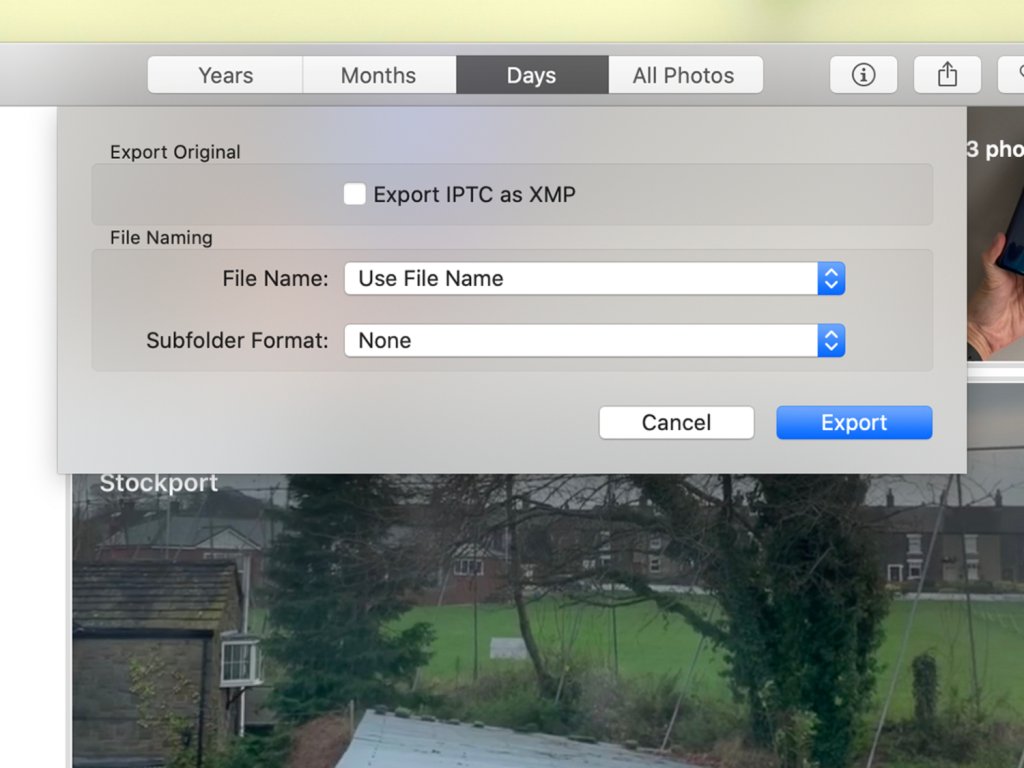
Contrary to what you might think, Apple does play nice with other cloud services—but only some of them. With the rest, you’ll have to export your photos and videos before you can upload them to other platforms.
How to sync photos to iCloud
The Photos app on Mac takes care of moving files between your computer and the cloud. To add new pictures and videos to your iCloud Photo Library, first open the Photos menu in the Photos app, choose Settings, find General, and make sure the box marked Copy items to the Photos library is checked. Then, choose File, Import, and pick the relevant files.
If you’re using iCloud on the web, you can import photos and videos to iCloud Photo Library by clicking the Upload button (an arrow pointing up into a cloud), then choosing the files you want to grab from your disk. If you’re on Windows, the iCloud for Windows app does a basic, but competent, job—you can specify which photo and video folders on your computer should sync to the cloud by clicking Options (next to Photos) in the main dialog.
Exporting pictures from iCloud
If you’re using a Mac, the iCloud Photo Library on your computer will sync to the cloud in a bespoke Apple-designed database that doesn’t play nice with some apps and services. To get your files into workable formats that other platforms will recognize, you’ll need to export them. Choose File, Export, then Export Unmodified Originals, and pick a new location on your disk. You can export individual files, groups of files, or entire albums.
If you’re exporting content to Google Photos, that platform has a built-in tool you can use to easily move your images from iCloud. You can check the specific instructions in the section above.
The iCloud web interface for Photos lets you export images and videos in standard formats as well, but it’s a slow process—you’ll need to individually select files, then click Download (an arrow pointing down out of a cloud). The iCloud for Windows program can help with that: if you click Options (next to Photos in the main dialog), you can specify a folder on your computer to save all your iCloud photos and videos.
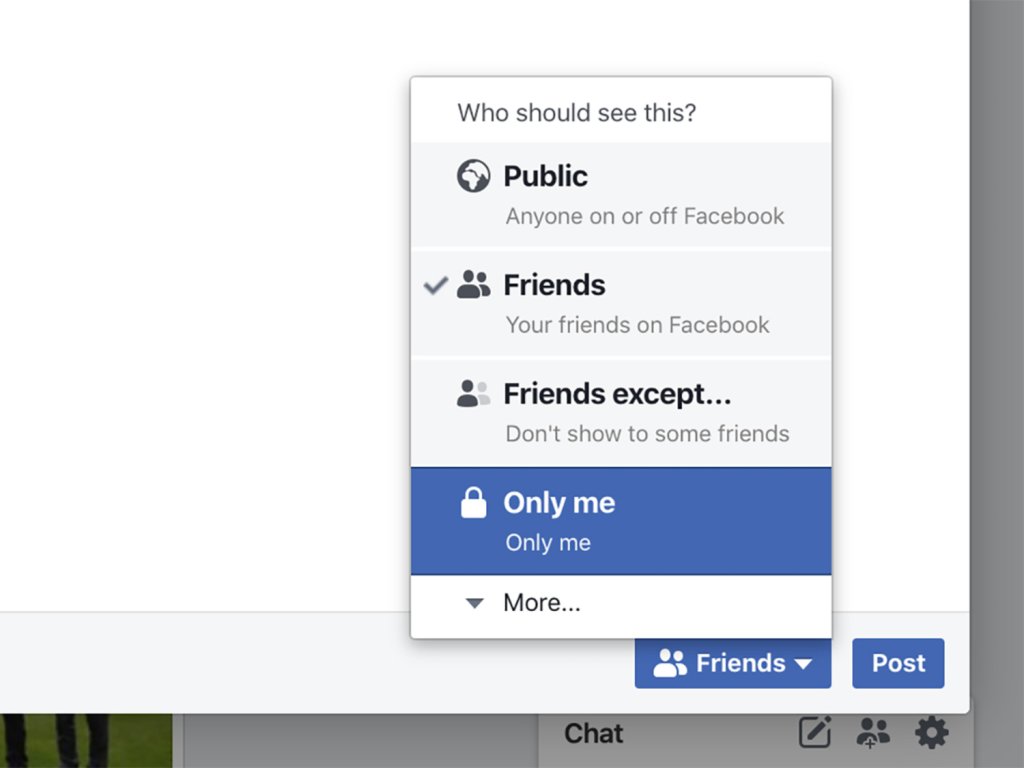
Technically, Facebook is a social media platform, but if you tweak your privacy settings, you can use it to manage your photos and videos as well.
How to upload photos to Facebook
If you’ve chosen Facebook as the place to host your most precious pictures, you can get them onto the site via your web browser: head to your profile page, then click Photos. From there, choose Add Photos/Videos or Create Album to upload one or more pictures.
Facebook is built around sharing, but you don’t have to share uploaded images and videos with the wider world if you don’t want to. The key tool here is the Default audience box that will pop up as soon as you select your files—this determines who can see what you’re uploading. It’s usually set to Friends by default, but you can change it to Only Me (or whatever audience you want).
How to download all your Facebook photos
Downloading individual photos and videos from Facebook is easy enough: open up the file in your web browser, right-click on it, and choose Save as. You can also open the photo, go to Options (the three dots in the top right corner of your screen) and choose Download.
To save all the photos and videos you’ve ever uploaded to the world’s biggest social network, head to the Facebook settings page on the web and select Your Facebook information. Find Download your information, click View, and check the box marked Posts (this includes photos and videos you’ve shared to the platform, along with other data). At the top of the page, make sure the Media quality setting is High, then scroll all the way to the bottom and select Request a download. You will get an email to your registered address with a download link containing a ZIP file with all of your photos and videos, ready to be uploaded to another platform.
Amazon Photos
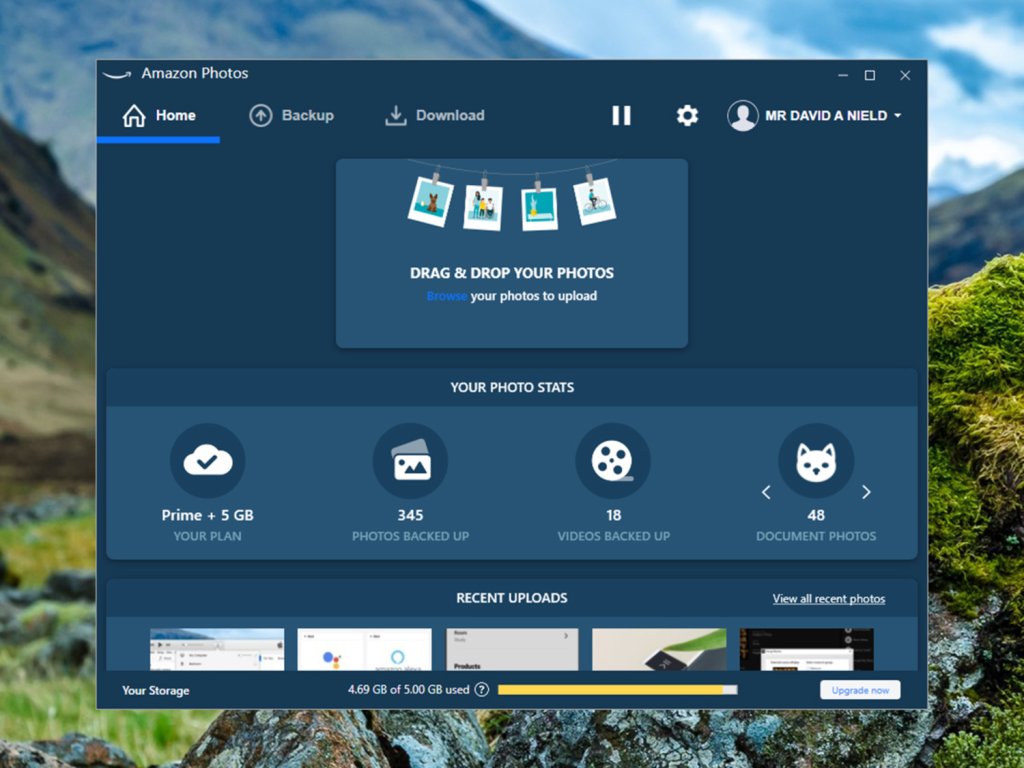
If you have an Amazon Prime account, you have unlimited space to store your photos. Yes, you read that right.
The Amazon Photos upload process
If you’re a Prime subscriber, you get unlimited online storage for your photos and 5GB for videos as part of the deal. To get files into your Amazon Drive, you can download the desktop app for Windows or macOS. From the Backup pane, you can have the app scan your computer for photos and videos, or point it toward specific folders to sync to the cloud. Any new files you add to those folders will automatically be uploaded to the web.
Alternatively, open the Amazon Photos web interface and click Add, then Upload photos or Upload folder. If you want to create albums, though, you’ll need to do so manually: click Add, then Create album.
The Amazon Photos download process
To get your movies and pictures out of Amazon Photos and transfer them somewhere else, the best option is the desktop app. Switch to the Download pane inside the app, pick Download folder(s), and assuming you want to download everything, select the Pictures folder from your Amazon Drive. Click Download to and pick a folder on your computer for the files.
You can download photos and videos from the web interface as well, but this is more for one or two files at a time. Select one or more files, then hit Download, and your browser will start saving the chosen files to your disk. If you’ve picked several files, the platform will package the photos together in a ZIP file.
Flickr
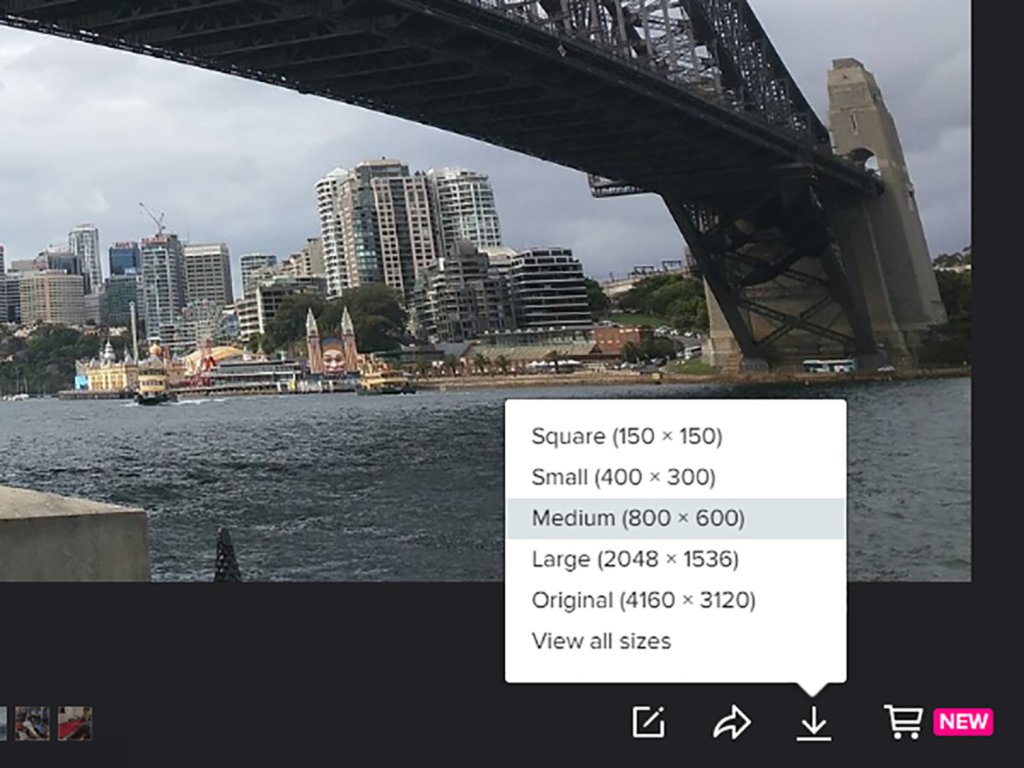
Downloading individual photos from Flickr is easy enough. Just hit the download button, select your quality, and you’re done.
Importing
If you need to get photos or videos onto Flickr, one way is to click the little Upload button on the toolbar at the top of the Flickr web interface (the button looks like an up arrow going into a cloud). Choose some files from your computer or drag them into the browser to add them to your Flickr library.
[Related: Your Flickr photos could help scientists keep tabs on wildlife]
Another option, which is easier if you’ve got dozens or hundreds of images and clips to move around, is to use Flickr Uploadr for Windows or macOS. This is only available to those with a Pro account ($8.25 a month or $72 a year), but if you need to shift a substantial number of photos, it’s probably worth the investment.
How to download Flickr photos
To get everything out of your Flickr account, you’ll need to go to your account settings page on the web, then click Request my Flickr data. You’ll get an email with a download link you can click on to save a ZIP file with all your images to your computer.
Alternatively, you can download your pictures and videos through the standard Flickr web interface. Click the download icon (a down arrow) on an album, a picture, or a video—if you’ve chosen an album, the system will pack your images into a ZIP file and send an email to your registered address with a link to download it.
Bonus: Get your content from Instagram and Snapchat
Yes, these apps are social media platforms, not storage services, but we still keep a lot of our photos and videos on them. If you already have a substantial part of your life living on Instagram and Snapchat, you can download it and back it up wherever you want. On Instagram, tap your Profile (bottom right), then the Menu button (top right), followed by Settings. Go to See more in Accounts Center, then Your information and permissions. Once you’re there, tap Download your information and Request a download. On Snapchat, go to the photo library page (tap the button in the bottom left corner of your screen—it’s a small preview of your latest snap. Select your images and videos, and then choose Export.
This story has been updated. It was originally published on January 20, 2020.
